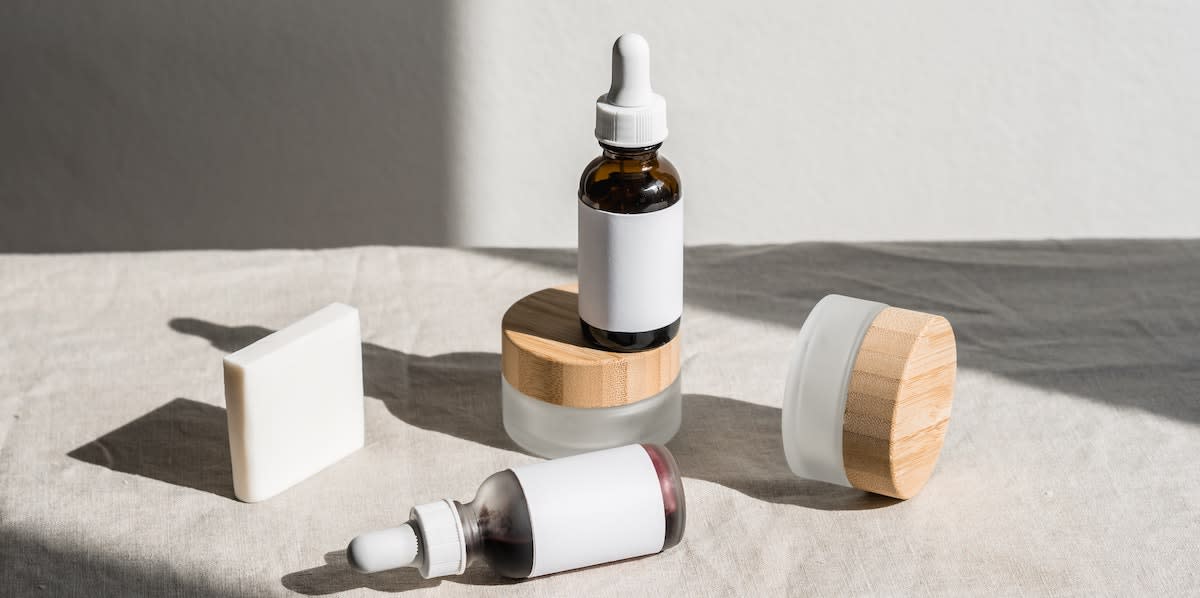It takes a lot of work to turn a great idea for a skincare product or service into reality, but it’s absolutely possible. Learn how to start a skincare line with a few steps, including learning how to identify your place in the market, define your target audience, and create a strong business plan.
What to Consider Before Starting a Skincare Line
Whether you want to start a natural skincare line or sell a line of antiaging products on an online store, there are a few things to consider before you dive in:
- Doubt: When undertaking a new or difficult challenge, it is normal to face self-doubt This is no different as you embark on a journey to start a business. Focus on your passion and enjoy what you are doing and you will be able to keep your business going strong even when things get tough.
- Hard work: Starting a business is a lot of work and takes a lot of time. You might be a small team or the single owner of your own skincare brand, which means you might juggle several roles—such as the marketing manager, graphic designer, and financial officer—all at once.
-
Startup costs: With DLAB Custom Cosmetics you can start a skincare line on a budget because the lab removes most traditional startup barriers. Instead of investing tens of thousands in R&D, regulation, and mass production, DLAB lets you create customized formulas from just 200 units, keeping your initial cost low. With production ready in as little as 45 days, it’s a true turnkey solution: you get professional-grade skincare products with low risk, fast launch, and full support — making it easy to start your beauty brand with minimal investment.
How to Start a Skincare Line
Starting your own skincare line or beauty brand to produce and sell beauty products takes effort. Entrepreneurs in the beauty industry spend time developing their business idea and marketing plan to make their own business a success. Entrepreneurs who want to dive into the beauty industry can follow these steps to get their new products into the market:
- 1. Identify your place in the skincare market. The first step in starting your skincare line is to identify your reason for being. Consider what role you hope to fill in the skincare product market. One way to figure this out is to study what gaps exist and where large brands have already successfully met the needs of consumers. By either determining the type of product or service that either doesn’t exist or is not exceeding customers’ expectations, you can fill a need. For example, if you find that you can offer a better type of skin moisturizer for sensitive skin or a more effective sunscreen for oily skin than what is commercially available, then you can distinguish yourself and carve out a path for your brand.
- 2. Define your target market. Once you know what niche you will fill in the market, you need to identify the type of person who needs what you offer. The more specific you are when determining your type of customer, the easier it will be to eventually market to them. Consider general demographics like age, gender, and income as well as specific metrics like their skin types, clothing interests, and hobbies.
- 3. Write a business plan. A business plan is a written document that states what a company does, what it wants to do, and how it plans to get there. A business plan will guide every decision you make and all of the content you create. A strong business plan for a skincare business will identify your mission statement with your goals for starting the brand, an overview of the market and the need you will fill, and a general marketing plan for how you will reach your audience. Spend time thinking about your goals for your skincare company. For example, you can consider whether you hope to gain a large following on social media or if you want to sell your product in big name stores nationally or internationally.
- 4. Choose your brand name and logo. Your name and logo are your brand image and may be one of the first things your customers see and interact with. Try to identify a business name that isn’t too close to a competitor’s and is easy to recognize. The name and logo should both communicate who you are and what your products will do for customers.
- 5. Find a skincare product manufacturer or supplier. The most important decision you will made in your business. That’s why DLAB is the right supplier choice, it combines professional cosmetic manufacturing with digital simplicity, flexibility, and speed — something rare in the beauty industry. Unlike traditional labs that require high minimums, long timelines, and complex processes, DLAB lets you create and customize your products fully online, starting from just 200 units. You can select ingredients, packaging, scents, and finishes — even upload your logo — all through a streamlined platform. In short, DLAB is not just a supplier — it’s a partner that empowers entrepreneurs to launch unique, ready-to-sell cosmetics with transparency, flexibility, and world-class standards.
- 6. Meet FDA or European regulations. At DLAB we also simplify this process: very product is EU-compliant, tested, and safe, meaning you can launch confidently without worrying about regulations or lab documentation. The lab’s 45-day turnaround, low MOQs, and customization support make it ideal for startups, influencers, or brands that want to scale quickly while keeping quality high and investment low.
- 9. Choose a price point for your items. This step ties into identifying and understanding your target audience. Choose a price point that will cover your production cost but that doesn’t alienate the customers you hope to attract when you launch your skincare business.
- 10. Begin the marketing process. Now that you have a unique product, you can begin marketing to your target audience. Consider all of the marketing tools at your disposal, including email marketing, word-of-mouth marketing, and social media marketing. Social media is one of the most common marketing strategy for skincare brands, and you may be able to find influencers who will work with you to share testimonials.
- 11. Set realistic sales and distribution goals. Don’t be afraid to partner with a business professional to embark on this step. Just because you have a passion for beauty products doesn’t mean you know about product distribution. If you can hit your sales goals, you can continue to grow, as per your business plan.
- 12. Start a soft launch, and then look for more investment and partnerships. Once you have a proof of concept—skincare products that you can sell in limited quantities - we know that, that’s why at DLAB we make small quantities orders. This step can help you scale up and access capital. Taking on a business partner who can provide that capital in exchange for a cut of future proceeds is the most traditional way to do this.
Turn your skincare vision into reality with DLAB Custom Cosmetics — the lab that makes building your own beauty brand simple, fast, and accessible. From formula to packaging, we handle the hard parts so you can focus on creativity, storytelling, and growth. Your dream brand is just a few clicks away — Start creating today with dlabcosmetics.com



Share:
How to Start a Beauty Brand: A Step-by-Step Guide
Low-Risk Business Ideas for 2025: How to Start a Profitable Cosmetics Brand Online